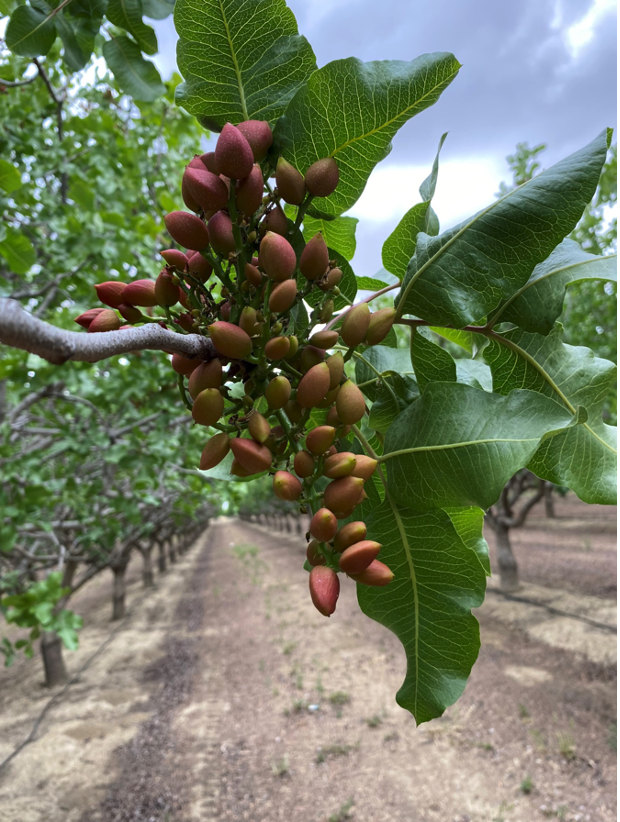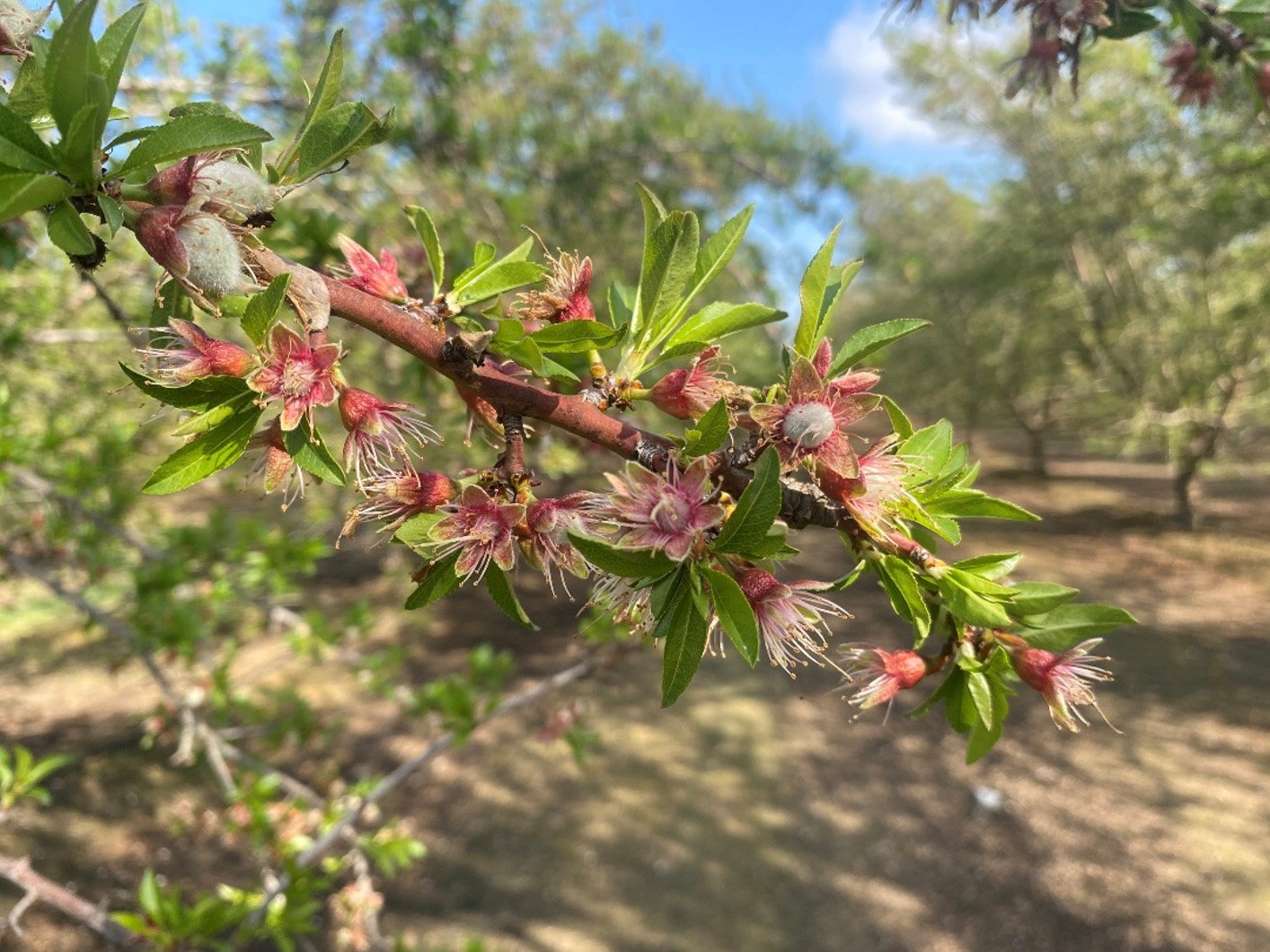By Derek Toschi, CCA, CAIS
The wet weather has continued into the 2023 spring in much of California which has presented new challenges we haven’t faced in recent years. Most of my almond irrigation consulting is done along SR 99 between Mettler and Kingsburg. Right now, I am seeing region differences in water uptake and soil conditions. In several fields around Bakersfield, I am seeing the beginning of water uptake through leaf transpiration as the leaves are continuing to expand. While I look north, I’m seeing a much slower start. These areas have also received substantially more rain which has kept the soil profiles much more saturated for longer periods of time.
First, let’s look at what many almond growers are experiencing right now in California. This field is north of Visalia and has received over 11” of rain since the start of the year and over 4” within the last 30 days. The excessive rainfall has contributed to saturated soil conditions and water uptake and evaporation isn’t strong enough to remove water from the soil between rains.

With leaf expansion here we should be seeing more water uptake over the coming weeks, especially if we see a break in the rain. For this grower, the recommendation is to hold off on irrigating until we see substantial water uptake from the top 12” of the soil profile Right now, the 12” soil tension is below 10 kPa which suggests this soil is still saturated and should be off water to allow oxygen back into the soil profile. I’ve seen this situation many times this season and it has really impacted growers’ march fertility programs. If a grower can’t push off their fertility program any longer, I advise keeping injections as short as possible to prevent nutrient leaching. In some cases, it can be best to break up injections into a couple shorter irrigations to not further saturate the soil profile.
Next, let’s look at a field in Shafter. Shafter has received about 6.5” since January 1st which is substantially less than many other parts of California. This field has a lighter soil with a lower available water holding capacity (AWHC) and I’m seeing much more active water uptake from transpiration. The soil tension at 12” has been steadily rising by ~3 kPa per day and is currently at 17 kPa. This means that this field now has a very good balance of oxygen and water within the soil and no longer has saturated soil in the top 12”. The deeper profile below 24” is still wet with soil tension below 10 kPa.


The recommendation for this field, is to continue allowing oxygen back into the soil by letting the soil tension at 12” rise above 30 kPa before irrigating. Based on the previous week, it should take another 4 days from March 21 for the 12” soil tension to reach 30 kPa. The next irrigation will be a great opportunity to start their fertility program because we know the trees should quickly pick up the nutrients throw mass flow as the leaves continue to expand. Because the soil profile is still wet below 24” it would be best to keep the irrigation short enough so as not to push water past 24”. This double line drip system puts out 1 acre-inch per acre every 24 hours of run time and water should move quickly through the light soil. The recommendation for the next irrigation would be for ideally 8 hours or less so fertilizer and water isn’t leached past the rootzone.
April Irrigation Tips
- Maintain a good balance of oxygen and water within the soil profile.
- The ‘sweet spot’ is maintaining soil tension between 10 and 30 kPa for almonds during early nut development.
- Allow oxygen back into the soils after heavy rains before irrigating.
- Avoid excessive irrigations.
- In fields that are still saturated, avoid running water until water uptake from transpiration picks up.
- Optimize nut and shoot growth by limiting water stress.
- April is a critical time for nut development, maintaining limited water stress through precision irrigation practices can help increase irrigation efficiency.
- Promote optimal nutrient uptake.
- After fertigations, allow the trees to pull water before running your next irrigation.
- Let the soil tension at 12” rise above 30 kPa before running water.







